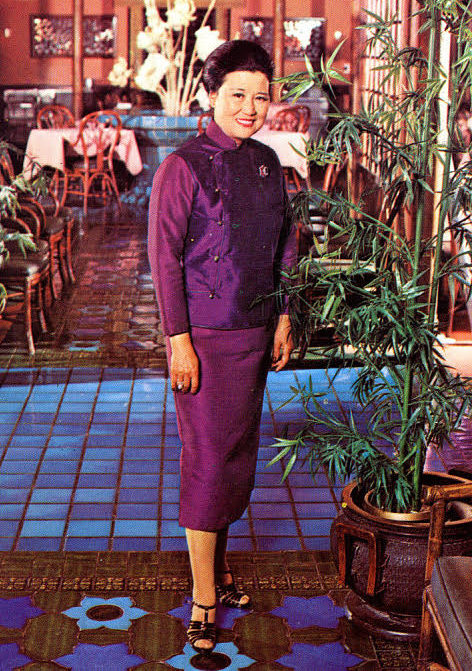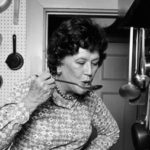
Editor’s Note: In honor of Women’s History Month, we’re sharing profiles of influential women in food and beverage.
Walk along the Main Street of almost any town in America today and you are sure to find at least one Chinese restaurant. Maybe it’s just a take-out joint, with numbered images of the available dishes hanging high above the counter top. Or perhaps it’s a more upscale restaurant, with table cloths, Lazy Susans and steaming hot pots of tea. Chinese food is a mainstay of the modern American palate. But it wasn’t always this way.
The first Chinese restaurants appeared in San Francisco’s Chinatown in the late 1800s, operated mainly by Cantonese-speaking immigrants from China. Decades later, many of these restaurants served Americanized versions of Chinese cuisine – think chop suey and General Tso’s chicken. It wasn’t until the legendary Cecilia Chiang opened The Mandarin in 1962 that Americans began to learn, taste and experience the true flavors of regional Chinese cuisine.
Born in 1920, Chiang grew up in a Ming Dynasty-era mansion in Beijing with her parents and 11 siblings. Her family was wealthy from the textile industry and enjoyed a comfortable life – until the Japanese invaded China in 1937. Chiang and one of her sisters eventually managed to escape the chaos by heading east to a part of China that was not occupied. As Chiang told Belinda Leong in a 2018 interview, it was a grueling experience:
“I walked during the Japanese invasion, I walked from Beijing to Chongqing. You know how many miles it was? Over 1,000 miles. I walked six months by foot. Six months.”
Chiang recounted in that same interview how one day, when she and her sister were walking with a group through a field, a Japanese plane flew low over them, firing its machine gun at everything that moved. Cecilia and her sister survived. Many others did not. “That’s an experience that you never forget.”
Once she arrived in Chongqing, Chiang met her future husband, Liang, a businessman. The couple moved to Shanghai and had two children, Philip and May. But Chiang was no stay-at-home mother. During the war years in Shanghai, Chiang worked as a spy for the American Office of Strategic Services, the precursor to the CIA. (Another of our Women’s History Month subjects, Julia Child, also worked for the OSS in Asia during World War II).
But by the time World War II had ended, the Chinese Communist Revolution had begun. Chiang and her family secured three tickets on the last flight out of Shanghai, making the painful decision to leave Philip behind with one of her sisters in Taipei (he was reunited with the family two years later). The family fled to Tokyo, where Chiang would eventually open her very first Chinese restaurant, The Forbidden City. It was popular among expats and even locals.
In the early 1960s, Chiang sailed for San Francisco to visit one of her sisters who had settled there. As the two were out walking in that city’s Chinatown one afternoon, two acquaintances from Tokyo stopped her on the street. They were trying to open a restaurant, but needed help negotiating with the landlord. Chiang willingly obliged. She would recount to Eater in 2018, “I was just so naive…I didn’t know business, I didn’t know the value of the money.” Chiang wrote a check for $10,000 for the deposit on their restaurant.
But when the two acquaintances backed out at the last minute, the landlord refused to give Chiang the deposit back. Deplete of money, in a foreign country and far away from her family, Chiang decided she had no choice other than to forge ahead.
What emerged from this haphazard start was one of the most iconic restaurants in American history. Chiang was determined to serve authentic Chinese regional cuisine at The Mandarin, mainly from the north of her homeland. American’s Chinese gastronomical lexicon at this time included terms like “chow mein” but certainly not “beggar’s chicken” or “tea-smoked duck.” Chiang’s menu featured specialities like eggplant with mouth-numbing Sichuan peppercorn, sizzling rice soup, sea urchin, and minced squab in lettuce cups.
The first years of business were slow. Chiang faced discrimination as a woman and as an immigrant – surprisingly, even from other Chinese immigrants, who were predominantly Cantonese from South China at this time. But Chiang knew that no one else, not in San Francisco or even in New York, was serving real Chinese food like she was, which kept her going.
A well-placed write-up in a big publication can change everything for a restaurant. And when The Mandarin was written up in the San Francisco Chronicle by legendary columnist Herb Caen, lines to get in began forming down the block. With the success of The Mandarin solidified, Chiang had her children join her stateside. Her husband remained in Asia for the rest of his life, though he visited regularly.
Almost a decade before Alice Waters opened her acclaimed Chez Panisse in 1971, Chiang was at the helm of one of the most successful restaurants in the country, offering as elegant and refined a dining experience as any other haute cuisine. Waters became a close friend of Chiang’s and even learned how to cook Chinese food from her – as did American food legends James Beard, Julia Child and Jeremiah Towers.
While Chiang sold The Mandarin in 1991 – it eventually closed in 2006 – she remained involved in the food world, writing cookbooks and making television appearances. She was a fixture on the California restaurant scene until her death at the age of 100 in 2020. Waters aptly captured Chiang’s influence, saying, “She did for Chinese cuisine in America what Julia Child did for French cuisine.” ◼
Note: This post has been updated to correct the date of the Japanese invasion of China.
Victoria Flexer, author of “A History of the World in Ten Dinners,” received her master’s degree in historical studies from The New School. She specializes in sharing history through food, art and culture.


